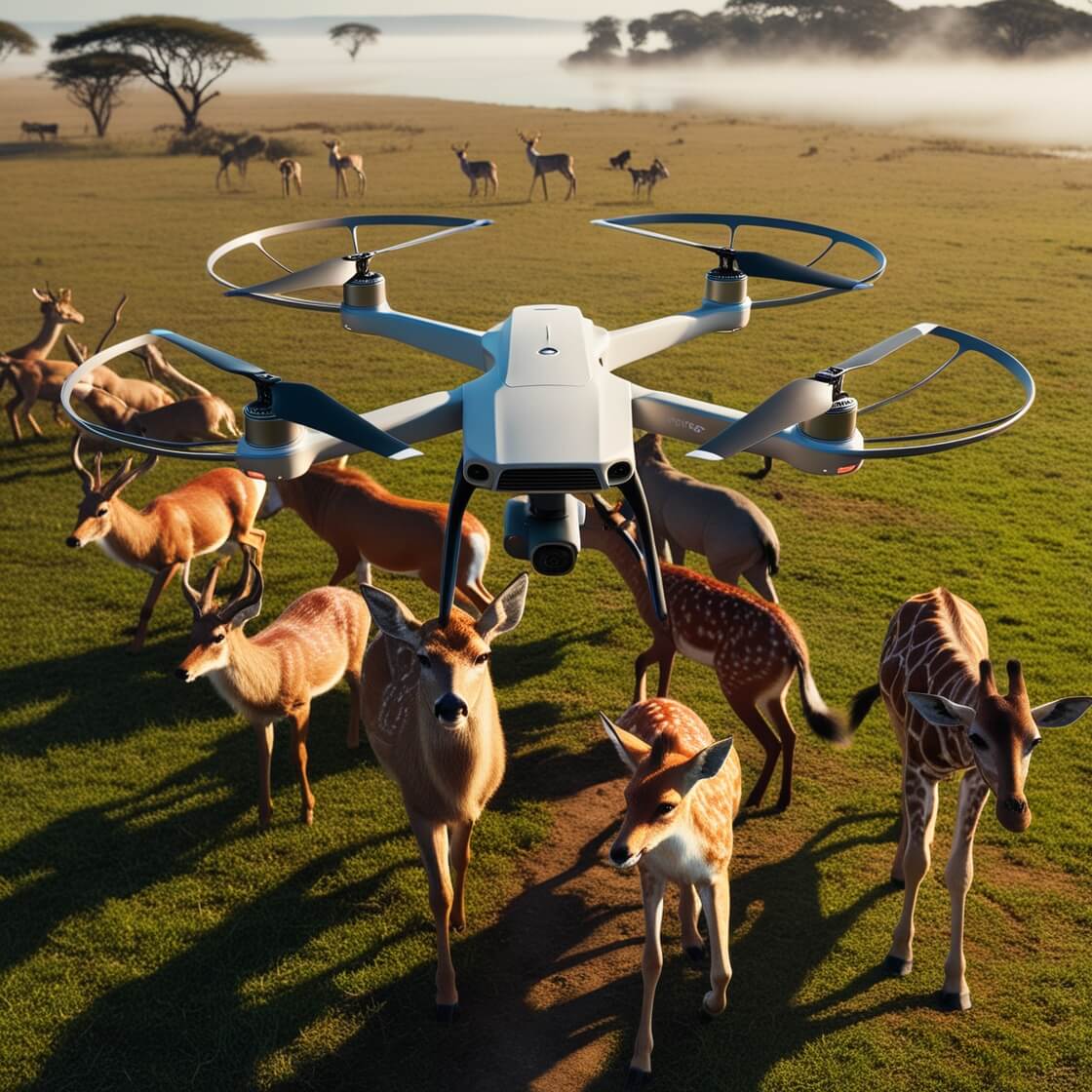Have you ever dreamed of capturing breathtaking images of wildlife in their natural habitats? 🦁🐘🐯 Here is a review on Top Drones for Wildlife Photography this year .drone technology has revolutionized wildlife photography, offering unprecedented access to stunning aerial shots that were once impossible. But with so many options on the market, how do you choose the perfect drone for your wildlife adventures?
Whether you’re a seasoned photographer or an enthusiastic beginner, selecting the right drone can make all the difference in your wildlife photography journey. From stealthy operations to long-range capabilities, the latest drones offer features specifically designed for capturing nature’s most elusive creatures. But it’s not just about the equipment – understanding regulations and mastering techniques are equally crucial for success in this exciting field.
In this comprehensive guide, we’ll explore the top drones for wildlife photography in 2024, delve into essential features, navigate drone regulations, and share expert tips to elevate your aerial wildlife photography game. We’ll also cover must-have accessories to take your shots to the next level. So, gear up and prepare to soar as we embark on an exciting journey through the world of wildlife drone photography! 🚁📸🌿
Top drones for wildlife photography and features
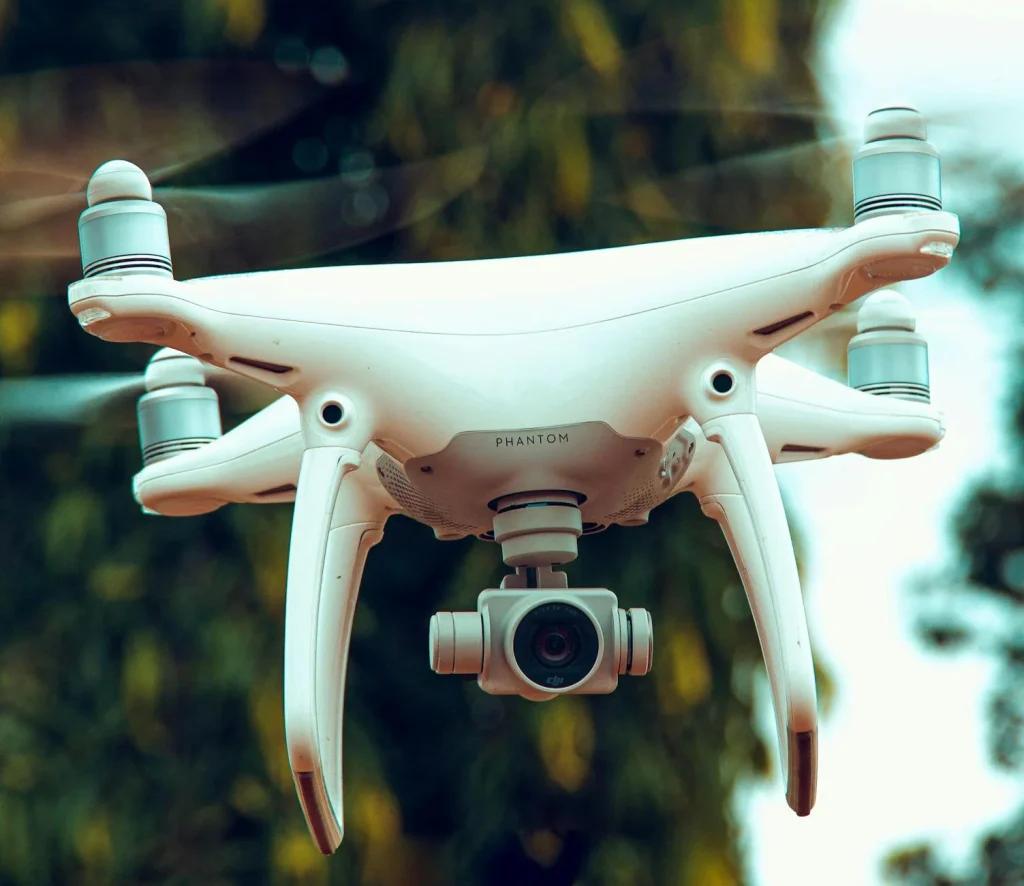
High-resolution cameras
When it comes to wildlife photography, high-resolution cameras are essential for capturing stunning details. The best drones for this purpose typically feature:
- 4K or 8K video resolution
- 20MP+ still image resolution
- 1-inch or larger image sensors
These specifications ensure that you can capture the intricate details of animals in their natural habitats, even from a distance. Here’s a comparison of common drone camera resolutions:
| Resolution | Video | Still Images |
|---|---|---|
| Standard | 1080p | 12MP |
| High | 4K | 20MP |
| Ultra-high | 8K | 48MP+ |
Extended flight time
Longer flight times are crucial for wildlife photography, allowing you to:
- Track animal movements
- Wait patiently for the perfect shot
- Cover larger areas
Most professional-grade drones offer:
- 30+ minutes of flight time
- Intelligent battery management
- Quick-swap battery options
Quiet operation
To avoid disturbing wildlife, drones with quiet operation are paramount. Look for:
- Low-noise propellers
- Efficient motors
- “Stealth mode” features
Zoom capabilities
Zoom functionality is vital for capturing close-up shots without alarming the animals. Top features include:
- Optical zoom (preferred for better quality)
- Digital zoom (for additional range)
- Hybrid zoom systems
With these features, you can maintain a safe distance while still getting detailed shots of wildlife in their natural habitats.
Best drones for capturing wildlife in 2024
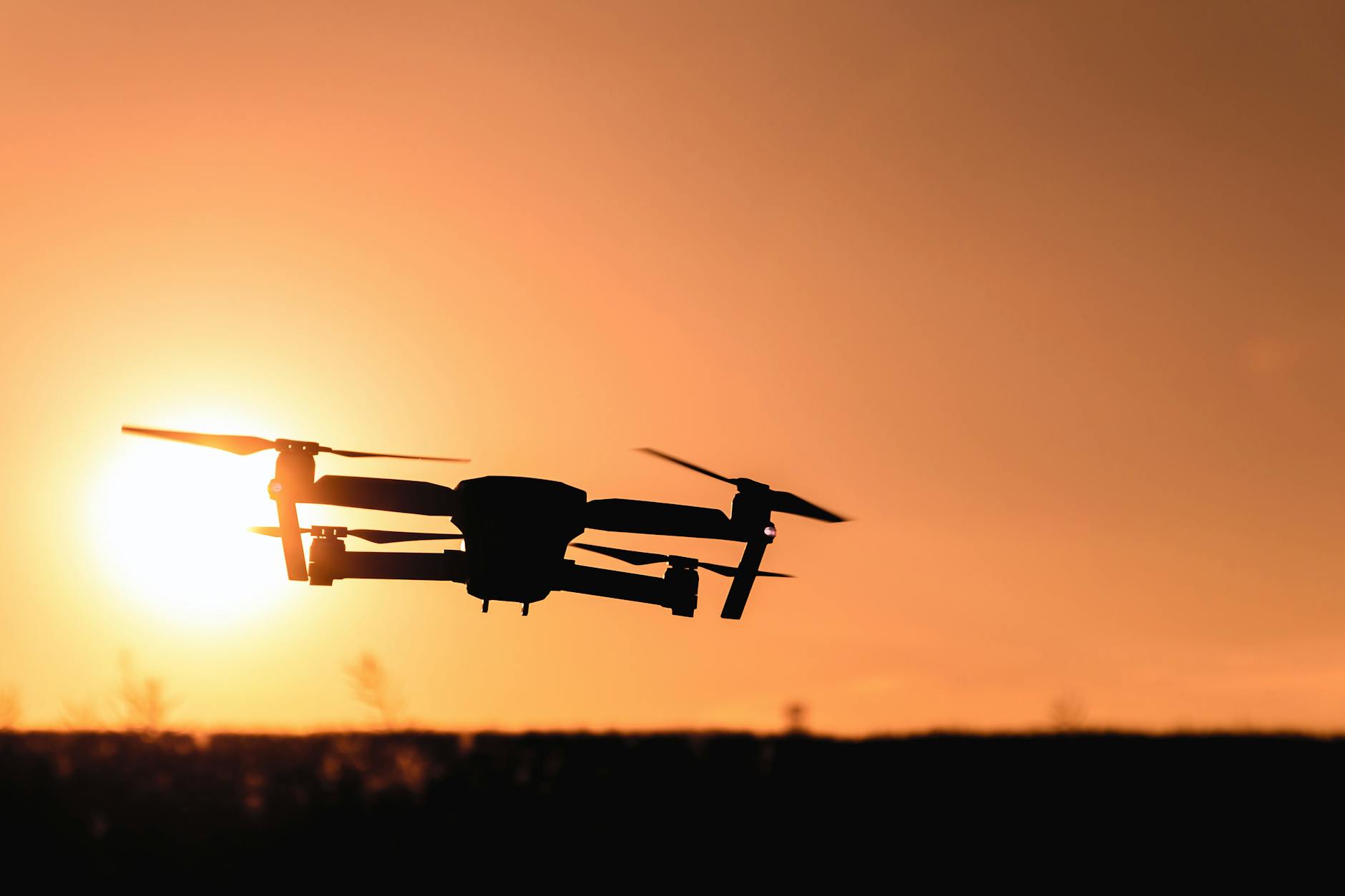
DJI Mavic 3 Pro
The DJI Mavic 3 Pro stands out as a top choice for wildlife photographers in 2024. Its 4/3 CMOS Hasselblad camera delivers stunning image quality, while the 5.1K video capability ensures every detail is captured. The drone’s 46-minute flight time allows for extended shooting sessions, perfect for patient wildlife observation.
Key features:
- 20MP 4/3 CMOS Hasselblad camera
- 5.1K video at 50fps
- 46-minute maximum flight time
- Omnidirectional obstacle sensing
Autel EVO Lite+
The Autel EVO Lite+ offers an excellent balance of performance and portability. Its 1-inch CMOS sensor captures sharp 20MP stills and 6K video, ideal for wildlife documentation. The 40-minute flight time and 7.4-mile transmission range provide ample opportunity for tracking elusive animals.
| Feature | Specification |
|---|---|
| Camera | 20MP 1″ CMOS |
| Video | 6K at 30fps |
| Flight Time | 40 minutes |
| Range | 7.4 miles |
Skydio 2+
For capturing fast-moving wildlife, the Skydio 2+ excels with its advanced autonomous flying capabilities. The drone’s AI-powered obstacle avoidance allows photographers to focus on composition while the drone navigates complex environments.
Sony Airpeak S1
The Sony Airpeak S1 is a professional-grade drone designed for serious wildlife photographers. Its ability to carry full-frame Sony Alpha cameras opens up new possibilities for image quality and lens selection.
Yuneec Typhoon H3
Rounding out our list is the Yuneec Typhoon H3, featuring a Leica camera that produces exceptional image quality. Its hexacopter design offers stability in challenging weather conditions, making it ideal for wildlife photography in various environments.
Now that we’ve explored the best drones for wildlife photography, let’s examine the important regulations you need to follow when using these devices in natural habitats.
Drone regulations for wildlife photography
Protected areas and restrictions
When it comes to wildlife photography using drones, it’s crucial to be aware of protected areas and their specific restrictions. Many wildlife habitats are designated as protected zones, where drone usage is either limited or completely prohibited. Here’s a breakdown of common protected areas and their typical restrictions:
| Protected Area Type | Typical Drone Restrictions |
|---|---|
| National Parks | Often prohibited or require special permits |
| Wildlife Refuges | Usually prohibited |
| Marine Sanctuaries | Restricted, especially during breeding seasons |
| Conservation Areas | May allow with permits and guidelines |
| State Parks | Varies by state, often restricted |
Always check local regulations before flying, as rules can vary significantly between locations and may change seasonally to protect wildlife during sensitive periods like breeding or migration.
Obtaining necessary permits
To legally operate your drone for wildlife photography, you may need to obtain specific permits. The process typically involves:
- Researching permit requirements for your intended location
- Contacting the relevant authorities (e.g., park rangers, wildlife officials)
- Submitting an application detailing your planned activities
- Providing proof of drone pilot certification (if required)
- Paying any associated fees
- Waiting for approval before conducting any flights
Ethical considerations
Ethical drone use is paramount in wildlife photography. Consider these guidelines:
- Maintain a safe distance to avoid disturbing animals
- Never chase or harass wildlife with your drone
- Avoid flying during sensitive times (e.g., mating seasons)
- Use quiet drones to minimize noise pollution
- Respect nesting sites and breeding grounds
- Share your footage responsibly to avoid revealing sensitive locations
By adhering to regulations and ethical practices, you can capture stunning wildlife imagery while preserving the natural habitats and behaviors of the animals you’re photographing.
Tips for successful wildlife drone photography
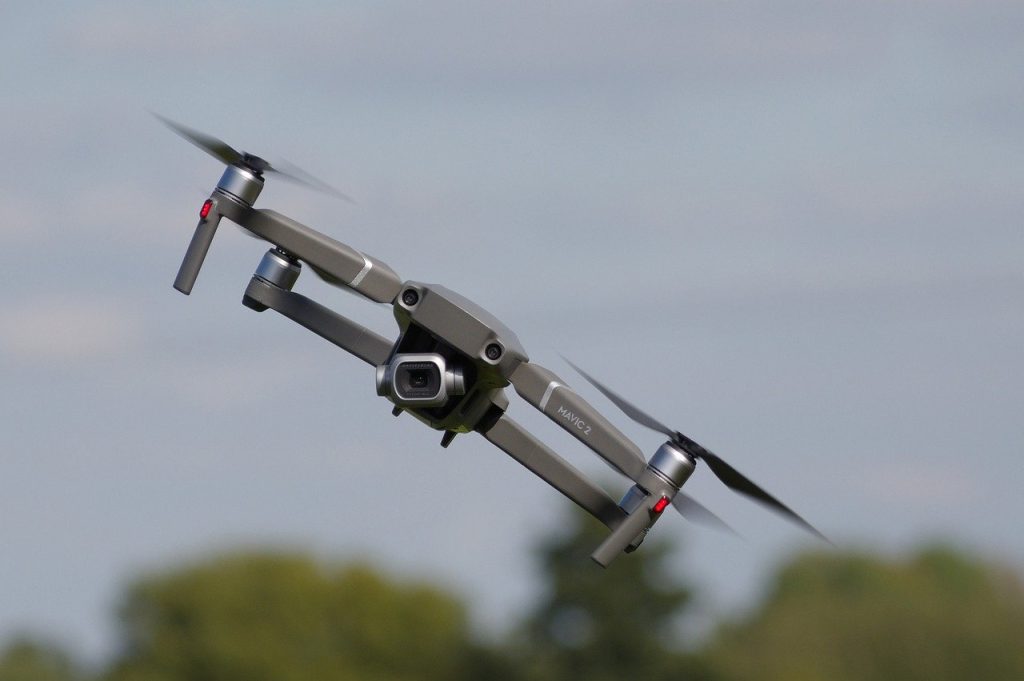
A. Understanding animal behavior
To capture stunning wildlife photographs with drones, it’s crucial to understand animal behavior. Different species react differently to drones, and knowing these reactions can help you capture the perfect shot while minimizing disturbance.
- Observe from a distance first
- Learn typical movement patterns
- Recognize stress signals
Here’s a quick guide to common animal reactions:
| Animal Type | Typical Reaction | Best Approach |
|---|---|---|
| Birds | May fly away | Approach slowly, maintain distance |
| Large mammals | May become curious | Use quiet drones, avoid direct approaches |
| Small mammals | Often hide | Be patient, use zoom capabilities |
B. Optimal flying techniques
Mastering drone flying techniques is essential for wildlife photography. Smooth, controlled movements help you capture clear images and avoid startling animals.
- Practice hovering steadily
- Use autonomous flight modes for consistent tracking
- Maintain a safe distance from wildlife
C. Best times for wildlife shots
Timing is everything in wildlife photography. The golden hours – just after sunrise and before sunset – often provide the best lighting conditions and increased animal activity.
- Early morning: Many animals are active
- Midday: Good for aquatic wildlife
- Dusk: Nocturnal animals become active
D. Post-processing for wildlife images
Post-processing can elevate your wildlife drone photographs from good to exceptional. Focus on enhancing natural colors and details without over-editing.
- Adjust exposure and contrast
- Enhance sharpness carefully
- Use noise reduction for low-light shots
Remember, ethical considerations should always come first in wildlife photography. Respect animal habitats and follow local regulations to ensure sustainable and responsible drone use.
Accessories to enhance your wildlife drone photography
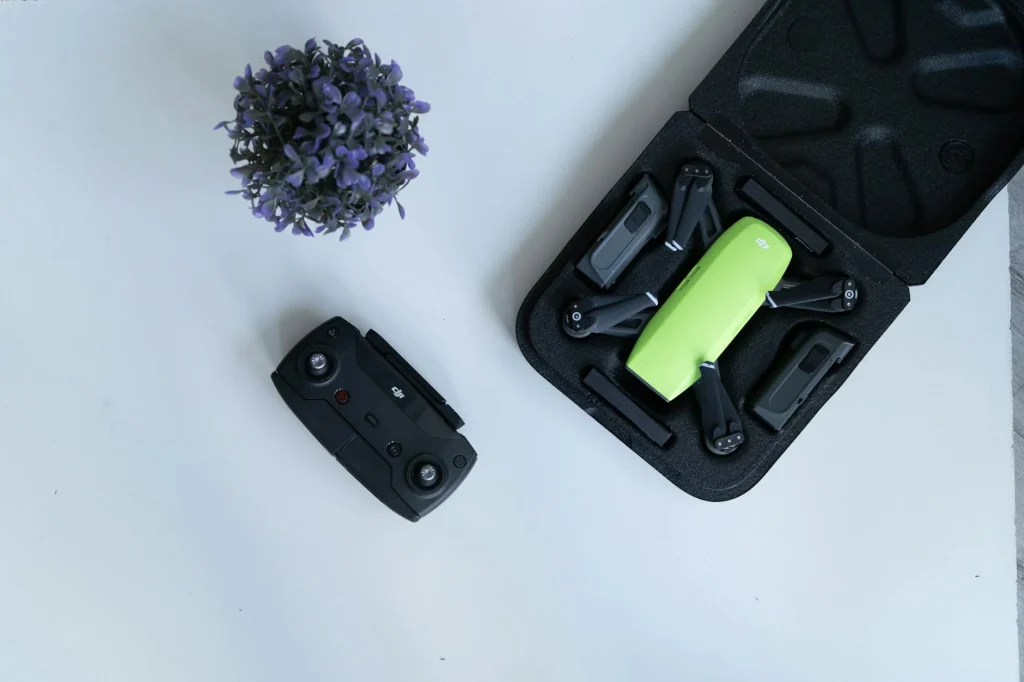
ND filters
ND (Neutral Density) filters are essential accessories for wildlife drone photography. These filters reduce the amount of light entering the camera sensor, allowing for greater control over exposure and shutter speed. Here’s a quick comparison of different ND filter strengths:
| ND Filter | Light Reduction | Stops |
|---|---|---|
| ND4 | 2x | 2 |
| ND8 | 3x | 3 |
| ND16 | 4x | 4 |
| ND32 | 5x | 5 |
Using ND filters enables you to:
- Capture smooth motion in flowing water or moving animals
- Achieve a shallower depth of field in bright conditions
- Reduce glare and reflections in sunny environments
Extra batteries
When photographing wildlife with drones, extra batteries are crucial. Always carry at least 2-3 spare batteries to extend your flight time and maximize shooting opportunities. Key benefits include:
- Uninterrupted shooting sessions
- Ability to capture wildlife behavior over extended periods
- Reduced risk of missing once-in-a-lifetime shots
Portable chargers
Portable chargers are indispensable for on-the-go wildlife photographers. Look for high-capacity power banks with multiple USB ports to charge your drone batteries, controller, and other devices simultaneously. Consider these features:
- Fast charging capabilities
- Lightweight and rugged design
- Solar charging option for extended field trips
Specialized carrying cases
Protect your drone and accessories with a specialized carrying case. Features to look for include:
- Waterproof and shockproof construction
- Customizable foam inserts for snug fitting
- Multiple compartments for accessories
- Backpack straps for easy transportation in rugged terrain
With these accessories, you’ll be well-equipped to capture stunning wildlife footage in various conditions. Next, we’ll explore some advanced techniques to elevate your wildlife drone photography skills.
Wildlife photography has reached new heights with the advent of cutting-edge drone technology. The best drones for wildlife photography in 2024 offer exceptional features like long flight times, high-resolution cameras, and obstacle avoidance systems. These advancements allow photographers to capture stunning aerial shots of animals in their natural habitats while minimizing disturbance.
As you embark on your wildlife drone photography journey, remember to prioritize the well-being of the animals and adhere to local regulations. Equip yourself with the right accessories, master your drone’s controls, and practice patience to capture those perfect moments in nature. With the right drone and techniques, you’ll be well-prepared to document the beauty of wildlife from a truly unique perspective.
